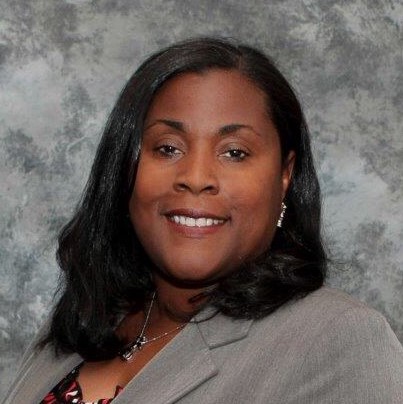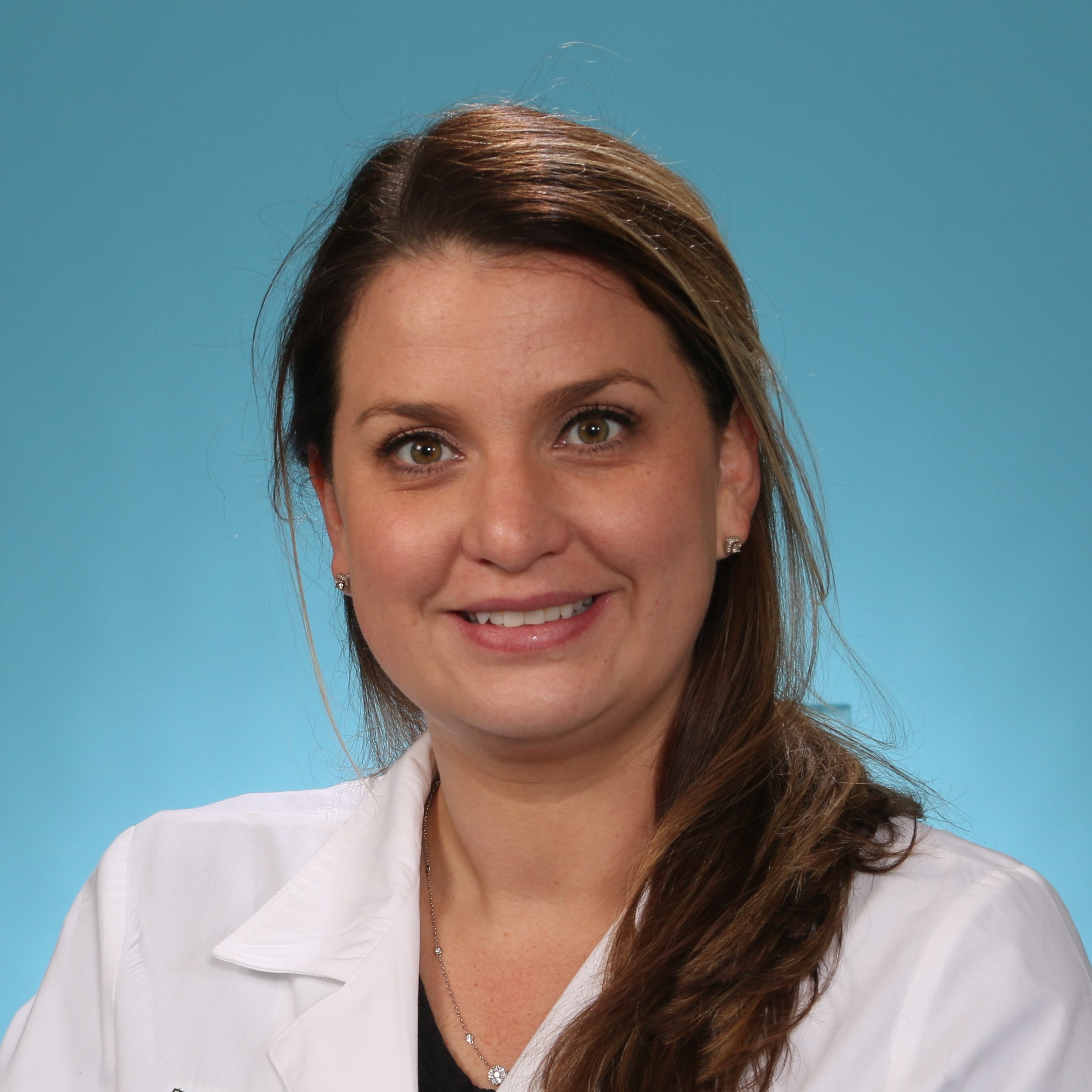Session Details
Lightning Round
Grand Salon A/B/C/D
2. Focus on youth violence prevention
3. Understand methods to engage community in safety initiatives
4. Drowning prevention strategies based on caregiver viewpoints and hospital and clinic-based initiatives
5. Improving partnerships across the healthcare system to improve injury prevention efforts

Emory University School of Medicine
Director, Clinical Initiatives
PARTNERS for Equity in Child and Adolescent Health

UAB Department of Pediatrics
Division of Pediatric Emergency Medicine
The Cost of Firearm Injuries and Fatalities in the United States, 2019

Associate Professor of Pediatrics and Emergency Medicine, Harvard Medical School
Lois K. Lee, MD, MPH, FAAP, FACEP
Eric W. Fleegler, MD, MPH
Firearm injuries and deaths result in substantial healthcare and societal costs in the U.S. Non-fatal firearm shootings can result in traumatic brain, spinal cord, orthopedic, and gastrointestinal injury requiring significant medical and surgical care as well as life-long quality of life and medical rehabilitation care costs. The objective of this study was to analyze the medical and societal costs of firearm injuries and fatalities in the U.S.
This was a cross-sectional study of costs of firearm-related injuries and fatalities using the Centers for Disease Control and Prevention’s Web-based Injury Statistics Query and Reporting System (WISQARS) Cost of Injury data for 2019. For nonfatal emergency department (ED) visits and hospitalizations, we calculated aggregate total costs and costs in the following categories: medical, work loss, and quality of life loss over the subsequent year. For fatalities, we calculated medical costs and aggregate costs for the value of statistical life. We calculated the total for all ages and by age groups and intent.
There were approximately 130,000 injuries and 39,707 fatalities from firearms in the U.S. in 2019. Total costs associated with firearm injuries and fatalities was $486 billion. For discharged nonfatal ED visits the total cost was $2 billion: medical $933 million, work loss $90 million, and quality of life loss $952 million. For nonfatal hospitalizations the total cost was $14.9 billion: medical $7.5 billion, work loss $639 million, and quality of life loss $6.7 billion. For fatalities the combined costs were $393 billion: medical $234 million and total value of statistical life costs $393 billion. Young adults 20-29 years old account for a disproportionate amount with total combined fatality costs of $103 billion. By intent, assault accounted for the highest total costs for nonfatal ED visits (84%) and hospitalizations (81%) and for fatalities was suicide (56%).
The $410 billion cost in firearm-related injuries for a single year are disproportionately borne by young adults for both medical and societal costs. Understanding the healthcare and societal costs are critical for contextualizing the public health impacts of and to emphasize the significance of firearms as a public health problem.
1) Discuss how firearm injuries and deaths result in substantial societal as well as healthcare costs.
2) Describe how costs for non-fatal firearm injuries include medical costs, work loss, and quality of life loss costs.
3) Understand young adults 20-29 years old account for a disproportionate share of costs of firearm related fatalities.
Characteristics and neighborhood-level opportunity of assault-injured youth in Milwaukee

General Surgery Resident
Children's Wisconsin
Medical College of Wisconsin
cgeorgeades@mcw.edu
Christina Georgeades, MD
Manzur Farazi, PhD
Carisa Bergner, MA
Alexis Bowder, MD
Laura Cassidy, PhD
Mike Levas, MD
Mark Nimmer
Katherine T. Flynn-O’Brien, MD, MPH
Violent injuries have been increasing over time. Multiple studies have explored demographic characteristics and neighborhood disadvantage in relation to the rise in violent injuries and also the risk of reinjury. However, few have explored protective factors and their effect on violent reinjury. The Childhood Opportunity Index (COI) uses neighborhood-level indicators to measure and map the degree of opportunity and protective factors a child has based on quality of resources such as education, social environment, and economic resources. We examined child and injury characteristics, in addition to COI, between reinjury and non-reinjury populations in assault-injured youth.
The Children’s Wisconsin Trauma Registry (TR) was queried for all children ? 18 years old with assault injuries from 1/1/2016 to 5/31/2021. The electronic medical record (EMR) was also queried for children treated and released from the Emergency Department who did not qualify for the TR. Reinjured children were compared to the non-reinjured population. Reinjury was defined as any child who sustained more than one assault injury during the time frame. Pearson chi-squared tests were used to compare categorical variables and Wilcoxon rank-sum test was used to compare continuous, skewed variables. Area Deprivation Index (ADI), a marker of socioeconomic status was evaluated using census block groups and COI was determined through census tract data.
55,862 encounters for trauma met inclusion criteria during the study period from the EMR and TR. Of those, 1,122 (2.0%) assault injury encounters were identified. 41 (4.0%) were assault reinjuries. The median time to reinjury was 240 days (interquartile range [IQR] 63-406 days). Reinjured children were significantly more likely to be older at the index encounter than non-reinjured children (median age 15 [IQR 13-17] vs. median age 14 [IQR 10-16], p=0.006). There were no differences in sex, race, ethnicity, insurance status, or ADI. Additionally, there were no differences in type, mechanism, and severity of injury between the two populations. Furthermore, children who experienced more than one injury did not live in areas of higher or lower COI than non-reinjured children.
Children who experience more than one assault were more likely to be older but were otherwise similar in demographic and injury characteristics to non-reinjured children. Furthermore, living in an area with more or less opportunity as measured by COI did not seem to mitigate the risk of reinjury. Though older children may be a focus of intervention efforts, identification of other factors on a social or environmental level that may lead to assaultive reinjury warrants further exploration. Additionally, additional investment in targeted interventions after index injury may help prevent reinjury.
1. In our study, there was no difference in the Childhood Opportunity Index, which measures the degree of opportunity and protective factors a child has, between reinjured and non-reinjured children. This highlighted the need for identification of social and environmental factors that lead to assaultive injury in addition to the importace of targeted intereventions after index injury to prevent reinjury.
2. Reinjured children were more likely to be older than non-reinjured children; however, there was no difference in other demographic factors such as sex, race, ethnicity, insurance status, or socioeconomic status.
3. There were no differences in type, mechanism, and severity of injury between reinjured and non-reinjured children
From the Inside-Out: Safe Routes to School in Virtual Reality

Center for Healthier Communities – Rady Children’s Hospital – San Diego
Coordinator, Safe Kids San Diego
Program Coordinator, Injury Free Coalition for Kids
Lorrie Lynn, MA
Safe Routes to School (SRTS) is a program that encourages the use of active transportation to and from school to reduce childhood obesity, improve safety knowledge to reduce pedestrian injury, inform needed infrastructure changes and reduce carbon emissions. Employing the Health Promotion model of the 5 Es (Education, Equity, Engagement, Engineering and Evaluation) and incorporating the Transtheoretical Model of Change theory. SRTS aims to improve SDOH and reduce inequities in our communities, supporting several social determinates of health; infrastructure for safe active transportation, reduction of crime and improving environmental conditions such as air pollution.
When COVID 19 rates were climbing, the California government mandated a lockdown for all non-essential institutions. On March 20, 2020, schools closed and were faced with the challenge of how to reach families to continue education for students. The Center for Healthier Communities at Rady Children’s Hospital had two long standing Safe Routes to School (SRTS) programs which quickly found themselves “locked out” of reaching the populations they were charged with serving. The team quickly went into action by developing a virtual curriculum for schools and families. Education programs that incorporated lessons, videos, and evaluation was the template that informed all development. All education was translated in into Spanish and Arabic. Incorporating Instagram and Facebook to share safety and mobility messaging including how to properly fit a bicycle helmet. QR codes were used to give access to lessons and evaluations.
Rolling out the digital platform met with many challenges that lead the team to re-think the best way to reach the families with limited access to technology. The first of pedestrian education had only one student complete the evaluations. To reach families with valuable education and resources the team worked with school leadership, community organizations and family liaisons to provide paper copies of the lessons from the digital platform at food drop off, community virtual events, and community organized drive-in movies. The conversion increased the number of student evaluations returned after each lesson. At a Halloween drive-in movie QR coded tickets were given to movie attendees. The QR code went to a pedestrian lesson and evaluation. Thirty-three evaluations were completed. These strategies including parent surveys, walking tallies and program evaluations all showed positive change brought about by SRTS education, encouragement, and engagement.
Recognizing the digital divide and adjusting activities to reach all families with education and encouragement led families to begin or maintain healthy habits of walking or biking as demonstrated by parent surveys at a Walk to the Park Campaign, August 20, 2020. These surveys showed that 80% of families still walked 3-5 times, even during COVID-19 lockdown. By seeking guidance from community (school) leaders and support personnel (family liaisons) for direction and communications SRTS teams were able to maintain trust throughout the ever-changing environment.
1. Identify effective online educational programs to improve safe pedestrian and bicycling behaviors in youth.
2. Describe community resources for safe active transportation during COVID-19
3. Employ appropriate evaluation tools to achieve our incremental changes in attitudes and behavior for active transportation during a pandemic
It Takes a Village: Improving Hospital Partnerships for Patients Requiring Injury Prevention Resources

Trauma Services
Dell Children's Medical Center
4900 Mueller Blvd. | Austin, TX 78723
t: 512-324-0000 x86829
Lindsay Pollok, MPH
Hospital-based injury prevention programs are an important resource for staff, families, and patients in pediatric trauma centers. Communication, training, and development of internal partnerships between injury prevention and clinical staff is key to meeting the needs of children with complex medical needs across the spectrum of service lines in a Level 1 Trauma Center and throughout a regional hospital network. In a hospital environment, injury prevention programs often have limited staff, resources, and funds, requiring innovative partnerships to best serve patients. The Covid-19 pandemic combined with staff turnover presented additional challenges to serving patient families. With many competing medical priorities for clinical staff, a patient’s child passenger safety needs may not be considered by clinical staff until discharge, which can be potentially stressful for staff and patient families.
Improving communication, information sharing, and internal relationships between the injury prevention program and clinical units including orthopedics, physical therapy, rehab, social work, emergency department, and the NICU has resulted in improved partnerships to thoroughly address patients’ injury prevention needs in a timely manner. Increasing the avenues for communication to include secure texting, paging, email, phone, intranet webpage and a physical safety center in the hospital provides multiple options for clinical staff to proactively contact the injury prevention program during business hours and provide access to informational resources 24/7. Improvements to communication include regular pre-operative communication between orthopedics and injury prevention as well as creating a patient list in the electronic medical record to indicate which patients are currently being followed by injury prevention staff.
Improvements in the process for communication between injury prevention and orthopedic staff around scheduled orthopedic procedures that may require injury prevention expertise results in more adequate time for preparation for complex consults that may require time to work through and resolve. This leads to a smoother and more efficient consultation experience with patient families, minimizing discharge delays. Partnership between physical therapists and injury prevention allows the two programs to cluster care when conducting car seat assessments and vehicle transfer training, which reduces the amount of interruptions throughout the day for the patient’s family. Additionally, the successful provision of injury prevention resources throughout a regional hospital network involves commitment and collaboration of multiple groups to ensure vulnerable populations are being adequately served. Ongoing challenges for our team include hospital staff turnover, limited hours and availability of the injury prevention team, and lack of integration to allow staff to request consultations through a patient’s electronic medical record.
Developing better communication processes and procedures between injury prevention and clinical units is critical to patient safety, throughput and overall experience. Improving communication and collaboration is an opportunity to have a positive impact on the child’s safety at discharge and beyond.
Describe the importance of multidisciplinary partnerships in order to serve patients more efficiently.
Describe strategies for improving communication and collaboration between injury prevention teams and clinical teams.
Discuss how our team has continually assessed this process to improve patient experience and efficiency.
Delivery of the Take 5 Safety Plan for Crying to Caregivers within a Hospital System

Yale School of Medicine
Center for Injury and Violence Prevention
Yale New Haven Hospital
Kirsten Bechtel, MD
Julie Gaither, PhD
Abusive head trauma (AHT) is the leading cause of traumatic death in infants in our state and occurs at a rate of 38.8 cases per 100,000 infants in the United States. AHT is often due to caregiver frustration with infant crying, causing them to shake the infant. The Take 5 Safety Plan for Crying is anticipatory guidance that focuses on five specific steps to help caregivers manage their frustration with infant crying and prevent shaking and AHT.
Two studies evaluated the effectiveness of Take 5. In the first study, the delivery of Take 5 as anticipatory guidance led to beneficial changes in parental beliefs about infant crying and the adoption of safe behaviors by caregivers when they become frustrated with an infant’s crying, such as walking away from the infant, doing tasks that help to relieve frustration, and not returning to the infant until calmer. In a recent study, infants whose caregivers received Take 5 were 79% less likely to have suffered AHT.
At present, we are doing several interventions to strengthen the Take 5 message and ensure that it is delivered to all caregivers within our hospital network.
1-We are pairing the Take 5 message with an audiotape of an infant crying to determine if the message is more memorable and more often used by parents at 6 weeks of life compared to it being delivered verbally by a health care provider at newborn hospital discharge 2-We developed a video PSA to determine if the message is more memorable and more often used by parents at 6 weeks of life compared to it being delivered verbally by a health care provider at newborn hospital discharge. 3-We are using a QI process to determine if providers are routinely providing this advice; at present, only 40% of pediatric providers offer this anticipatory guidance to caregivers at well newborn discharge at the York Street Campus of Yale New Haven Health. We would like to raise this rate to 80%.
By strengthening the Take 5 message so that it is memorable to parents and ensuring that all providers deliver Take 5 at newborn hospital discharge, we hope to reduce the rates of AHT in infants born in our hospital system.
1-Abusive head trauma is a leading cause of preventable traumatic death in infants.
2-Abusive head trauma is often due to caregiver frustration with infant crying.
3-The Take 5 Safety Plan for Infant Crying reduces the likelihood of AHT in infants whose caregivers receive this guidance.
Optimizing Patient-Reported Outcomes Feedback to Youth Participants in a Violence Intervention Program
University of Colorado - Denver
ashley.hollo@childrenscolorado.org
Ashley Hollo, MD, MPH
Mark Nimmer, BS
Brooke Cheaton, MBA
Marlene Melzer-Lange, MD
Michael Levas, MD MS
The health, well-being and psychological development of children in urban areas is threatened by exposure to interpersonal violence. Violence intervention programs, such as Project Ujima, provide children with comprehensive treatment following exposure to violence. Although the collection of PROs throughout treatment has been demonstrated to be feasible, youth and crime victim specialist preferences for data presentation is unknown. We sought to determine patient and caregiver preferences regarding which PROs are of interest and how best to visually display them for optimal engagement.
Participants in Project Ujima’s 8-week summer camp who were either a victim of violent injury, a direct relative of a violent injury victim, or a homicide survivor were recruited. We conducted structured interviews to determine which parameters and visual formats were of highest interest and best understood by youth participants and crime victim specialists.
Fifteen youth and nine crime victim specialists consented to participate. Both preferred visuals with the highest level of color-shading and descriptions. The domains with the highest level of interest among both youth and case workers were social, anger, emotional, school, physical, peer relations, and psychosocial well-being. Youth wanted to see how their scores compared to others in the program, while crime victim specialists did not think such comparisons would be beneficial.
Youth participants and their crime victim specialists in a violence intervention program desired to see their PROs in a graphical form. Both groups preferred visuals with the highest level of shading and descriptions. Further investigation is needed to determine how to implement PRO visuals with the desired domains into regular violence intervention programming.
1. The feasibility of collecting patient-reported outcomes (PROs) from youth victims of violence to assess their well-being.
2. Which quality of life measures are important to our cohort of youth victims of violence and their case workers, and how these outcomes can best be graphed for optimal understanding.
3. How graphical displays of patient-reported outcome measures can be used to improve programming of violence intervention programs.
Voices of Youth: Community Safety and Gun Violence in the Time of COVID in East Harlem (EH), NY

Columbia University
Professor of Clinical Epidemiology and Pediatrics
Senior Research Scientist, New York Academy of Medicine
dl3365@cumc.columbia.edu; dlaraque-arena@nyam.org
O. Adeonigbagbe, MPH
R. Chernet, BA
J. G. Wallace, BSPH
M. K. Formica, PhD
R. L. Flores, PhD
R. Marchesani, MSSc
Danielle Laraque-Arena, MD, FAAP
Directly collaborating with youth to gain an understanding of perceptions of school and community factors that affect their physical, social, and psychological well-being could identify points of intervention. Using a youth participatory approach within a Child Rights Framework, we aimed to elucidate systemic issues that impact EH youth and derive lessons that translate to youth in other communities.
An anonymous survey was developed based on UNICEF-USA Child Friendly Cities Initiative consisting of 34 questions categorized into five domains: ‘My Safety and Inclusion’, ‘My Participation’, ‘My Play and Leisure’, ‘My Community Service’, and ‘My Living Environment’. Additional questions were added by three EH student co-researchers who worked with near-peer medical and graduate students. The final 68-question survey included additions from the CDC Youth Risk Behavior Survey specific to gun violence and COVID. The NYAM IRB approved the study. Students (grades 9-12), attending advisory classes for four consecutive days in April, were invited to complete the survey using the platform QuestionPro®. Each question was rated on the Likert Scale (Mostly True, Sometimes True, Never True, I don’t understand the question, and I prefer not to answer). A short discussion followed.
With baseline enrollment of 292, a mean of 244 students were in attendance on the 4 survey days, and 153 surveys were completed. A total of 67 freshmen, 36 sophomores, 28 juniors, and 21 seniors responded. 46% stated they were female, 48% male, the remaining 6% choosing either non-binary, transgender or preferred not to say. 42% stated they were Latinx, 30% Black/African American, 20% other, 5% Asian/Asian American and 2% White/ Caucasian. 79% of students were aware that children have rights. 38% could mostly identify and 38% could sometimes identify adults at the school or in EH with whom they could freely talk to about abuse or violence. 35% had personally witnessed gun violence, 51% had seen someone physically attacked, beaten, stabbed or shot in their neighborhood. The majority did feel safe at school, although about one third reported being safe from bullying only sometimes or never; either in-person or online. 20% reported never feeling safe from sexual harassment in public spaces, about half of the students reported feeling safe walking to school, and less than 50% feeling safe on public transportation. During the pandemic, 24% reported that their mental health was not good most of the time, and 29% reported a parent/adult in the home who had lost a job. 60% reported that they knew where they could seek mental health services.
Student respondents report awareness of their rights and identified the school as a relatively safe zone with support from adults at the school and access to mental health services. Nonetheless, their exposure to violence and sexual harassment was not uncommon and points to the urgent need for greater community safety.
1. Attendees will learn the process of youth participatory research (YPAR).
2. Attendees will learn about the need for greater community safety from the perspective of youth.
3. Attendees will learn about the experience of youth with gun violence.
Equestrian Helmet Use in the Movies: A Lost Opportunity for Injury Prevention?
Liberty High School, North Liberty, Iowa
Leela Strand
Karisa Harland, PhD
Suleimaan Waheed, DO
Charles Jennissen, MD
Equestrian helmet use remains relatively low despite their proven success in reducing serious head injuries. Societal forces, like mass media, impact the culture of safety practices and what is considered normative behavior. Our objective was to examine how equestrian helmet use is portrayed in movies and whether there were any differences in helmet use by age, sex, type of horse interaction, movie rating, or over time. We also wanted to examine if characters experienced injuries from potential injury mechanisms, including falls, and whether there were any differences in head injuries by helmet use.
The American Humane on-line database was used to identify movies with horses from 1990-2021. Historical and fantasy films were excluded (n=325), and 94% (384/409) of remaining films were available for review through Netflix DVD or streaming venues. 170 movies met final inclusion criteria having scenes with people interacting with horses. All individuals in horse scenes were coded for study variables. Potential injury mechanisms and injuries sustained were also coded. Frequencies and statistical analyses including chi-square, Fisher’s exact and logistic regression analyses were performed.
1376 individuals in 451 scenes were analyzed. Equestrian helmet use in movies was extremely low (13%). Helmet use was higher when riding horses (177/988, 18%) than for off-horse activities (7/388, 2%), P<0.0001. Overall, youth (52/172, 30%) were helmeted in greater proportions than adults (132/1216, 11%), P<0.0001. Females in movies were nearly four times more likely than males to be wearing helmets during recreational riding (OR 3.76, 95% CI 2.19-6.45). Youth (6/48, 13%) had a higher proportion wearing helmets when around but not riding horses than adults (1/340, 0%), P<0.0001. They were also over 4 times more likely to be helmeted than adults during recreational riding (OR 4.32, 95% CI 2.43-7.67). Higher proportions of movies had all youth wearing equestrian helmets when recreationally riding (8/40, 20%) as compared to movies having all adults wearing helmets (7/101 movies, 7%), P=0.033. No one was wearing a helmet during occupational riding in G/PG movies. No individuals doing recreational riding in G movies were wearing a helmet. A significantly higher proportion of G/PG movies had all children/teenagers depicted unhelmeted during recreational riding (16/19, 84%) as compared to PG-13/R movies (9/21, 43%), P<0.01. There was no increase in equestrian helmet use in movies over time. In fact, individuals in movies released from 1990-1999 were over 4 ½ times more likely to have helmets while recreationally riding than movies released from 2010-2019 (OR 4.67, 95% CI 2.35-9.30). Of characters falling off horseback (n=45), 60% experienced no apparent injury while six (13%) had head injuries. There was no difference in the proportion suffering a head injury by helmet use.
The vast majority of characters interacting with horses in movies were unhelmeted, reinforcing an unsafe societal norm. Improvement in mass media equestrian helmet use might help positively shift this paradigm, thereby increasing helmet use and decreasing head injuries.
1. Participants will be able to share how mass media may have a role in shaping normative safety behavior.
2. They will be able to describe equestrian helmet use in the movies and at least two demographics that are more frequently shown to be wearing helmets.
3. Attendees will be able to state the effect of a movie’s rating and release date on the portrayal of equestrian helmet use.
Evaluation of a Hospital-driven Drowning Prevention Program in Pediatric Primary Care Settings
Phoenix Children's
Injury Prevention Specialist
bcardiel@phoenixchildrens.com
Tiffaney Isaacson, BS
Yezan “iPod” Hassan, BA, BS, BSHS
Bianca Cardiel, BSW
Angelica Baker, BA
Jodi Brigola, BA, MA
Catherine Tretiakova, DNP, RN, CPNP-PC
Jessica Wani, JD
Roy Jedeikin, MD, MBBCH, FAAP, FACC, MBA
Diana Bowman, PhD
Drowning in the United States (U.S.) is endemic to the pediatric population, representing the leading cause of unintentional injury death for children aged one to four years and generating medical costs of $17.5 million in 2020. In Arizona, the drowning rate for children in this age group is nearly double the national rate. Pediatric primary care providers (PCPs) are in a central position to lead drowning prevention efforts because they have regular access to caregivers of children in the highest risk age group and are trained to deliver injury prevention information. However, pediatricians face a number of barriers to delivering anticipatory guidance, including competing topics and limited time. The Pediatric Drowning Prevention (PDP) pilot program is a quality improvement study which seeks to increase frequency and quality of drowning prevention anticipatory guidance delivered to caregivers of children aged one to four years during well child visits.
Arizona pediatric PCPs who conduct well child visits for children aged one to four years in the metropolitan Phoenix area were eligible to participate. Recruiting took place in partnership within a clinically integrated network of pediatric PCPs. Participants received curriculum and drowning prevention resources during two brief luncheons, delivered two to seven months apart. Additional quality improvement resources were provided when the project achieved Maintenance of Certification approval, including PDSA guidelines. MOC details and effects will be examined in a subsequent analysis. Surveys at both luncheons measured provider frequency and quality of drowning prevention education, including the effects of caregiver stress, use of life jackets, and limitations of swim lessons. Surveys also examined provider propensity to discuss the connection between developmental milestones and drowning risk, and perception of overall program efficacy. Responses were analyzed using appropriate statistical tests.
At eight practices, 33 PCPs were recruited between March 2020 and November 2021. A total of 750 handouts, 132 posters, and 525 water safety sunscreen packets were distributed. Survey results showed a significant increase between pre- and post-surveys in willingness to share drowning prevention education and discuss the connection between developmental milestones and drowning risk (P<0.001).
Furthermore, PCP messaging became more specific and frequent. More participants discussed designating a supervising adult during swim time, several months after education. Additionally, participants advised caregivers against swimming when they are stressed and encouraged use of a U.S. Coast Guard approved life jacket.
Participants unanimously reported that the PDP program increased caregiver knowledge on drownings, risks, and safety strategies, and recommended this program to other primary care offices.
Pilot results are promising. The program positively influenced frequency and messaging of Drowning Prevention anticipatory guidance delivered by pediatric PCPs. As a scalable, replicable program with participant endorsement, the program should expand and be replicated.
1. Explore why new solutions are needed to address drowning prevention messaging during well child visits in children ages 1 – 4 years.
2. Consider new partnerships for injury prevention professionals, to reduce risk in any community.
3. Examine innovative programming, to ensure resiliency during health care disruptions.
Firearm Screening and Gun Lock Distribution in a Pediatric Emergency Department

Associate Trauma Medical Director
Co-Director, Emergency Medical Services
St Louis Children’s Hospital
Washington University in St. Louis
Theresa Timm, MD
Lindsay Clukies, MD
Kristen Mueller, MD
Melissa An, MD
Monica Lim, MD
Fahd Ahmad, MD, MSCI
Firearm-related injury is the leading cause of death in children. The American Academy of Pediatrics recommends storing firearms locked and unloaded, however, of the estimated 30 million children living in households with firearms, only 44% of these firearms are stored appropriately. Efforts to improve safe storage in a pediatric Emergency Department have not been reported in the literature. This study aimed to evaluate firearm access and storage methods in patients presenting to a level 1 pediatric trauma center and analyzed changes in these parameters after education and the distribution of gun locks.
Patients presenting to our ED were screened for access to firearms and storage techniques. Parental responses were obtained from the Electronic Medical Record over a six-month period. Those who received firearm safety education and a gun lock were consented to complete a post-intervention survey. Qualitative data were presented as frequencies with percentages. Pearson’s Chi-Square test or Fisher’s exact test were performed to assess differences of responses between pre and post-tests.
Of the 22,239 patients seen in our pediatric ED, 11,771 parents were screened with the firearm-focused survey. 17.5% of participants reported access to a firearm, 14% reported safe storage methods (gun locked and unloaded) and 578 individuals requested a gun lock. Among the 269 consenting participants, 66.2% reported using the gun lock. When comparing pre and post survey responses, access to firearms increased from 74% to 86.6% (p<0.0001), the use of multiple storage methods (i.e. gun safe and lock) increased from 9.7% to 52%, and those who did not store their firearm decreased from 11.1% to 3.4%. Finally, individuals storing a gun unloaded increased from 62.1% to 70.3% (p=0.0289).
Our program allowed for the distribution and usage of free gun locks to families in a pediatric ED, while demonstrating some improvements in safe-storage methods.
Attendees of this session will be able to indentify
- Sociodemographic characteristics, firearm access and gun storage practices of parents of children presenting to our pediatric emergency room.
- Changes in firearm access and gun storage practices of parents who receive a gun lock
- Usage of the distributed gun lock and opinions of the gun lock program.
Caregiver Views of Toddler Water Competency Skills

Drowning Prevention and Water Safety Program
Trauma and Injury Research Center
Dell Children's Medical Center
molly.johnson2@ascension.org
Molly B. Johnson, PhD, M.AmSAT
Karla A. Lawson, PhD, MPH
Drowning is a leading cause of death for toddlers. Caregiver supervision is an important layer of protection against drowning. However, caregivers may reduce supervision as their toddler gains water competency skills. The aim of this study is to explore reported water competency skills, swim lesson experience, and views about supervision by caregivers of toddlers.
A survey was conducted on 650 adult caregivers of 1-4 year old toddlers using the online Amazon MTurk platform. The survey asked caregivers their toddler’s age, swimming lesson history, and attitude about supervision following swimming lessons. Surveys also asked whether their toddler could perform these water competency skills: 1) Enter water above his/her head and return to the surface, 2) Turn around and then find an exit from the pool, 3) Float unassisted for 1 minute, 4) Tread water for 1 minute, 5) Exit the pool without using a ladder, and 6) Swim 25 meters without stopping. ANOVA and Bonferonni post-hoc pairwise comparisons were used to determine differences in water competency skills by toddler age.
On average, caregivers reported that their toddler could perform half of the water competency skills (Mean: 2.85; SD: 1.95). The number of skills reported varied by the toddler’s age (F(3,646)=11.65, p<0.001). Caregivers reported significantly fewer skills for 1-year olds (Mean: 1.88: SD: 2.22) compared to other ages. The number of skills for 2-year olds (Mean: 2.68; SD: 1.95) and 3-year olds (Mean: 2.75; SD: 1.96) were not significantly different from each other. Caregivers reported significantly more skills for 4-year olds (Mean 3.41; SD: 1.95) compared to younger toddlers. In all age groups, fewer toddlers were reported to be able to swim 25 meters without stopping or exit the pool without using a ladder than other skills, with only about ? of toddlers reportedly able to perform these lifesaving skills. The majority of the toddlers had taken swimming lessons (59.2%), with 29.5% planning to take their toddler for swimming lessons and 11.2% not planning to take their toddler for swimming lessons. Thirty-six percent of caregivers agreed or strongly agreed that, after a toddler has had swimming lessons, they don’t need to be watched as closely when they are in a pool.
Although caregivers reported more water competency skills for older toddlers than younger toddlers, total numbers of skills were low across all age groups. Even with a majority of toddlers having taken swimming lessons, few were reportedly able to perform critical life-saving skills. Yet, many caregivers believed that toddler supervision could be reduced following swimming lessons. Findings suggest that misconceptions about the ability of swimming lessons to drown-proof toddlers are common and that efforts are needed to change perceptions about the importance of supervision regardless of swimming lesson history.
Explore caregiver perceptions of swimming lessons, supervision, and toddler water competency skills.
